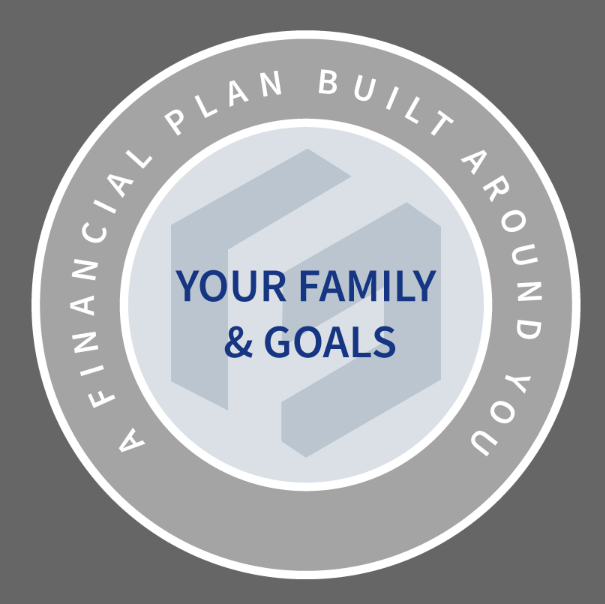
Our mission is to help you Preserve Your Assets and Protect Your Lifestyle. Our newsletter aims to educate you on the economic environment and provide life perspectives and financial planning ideas to help you!
Quarterly Market Review

iM Global Partner’s Market Slides
🔷- The Fed’s recent decision to cut was positioned by Fed Chair Powell as a “risk management” step given concerns over softening labor market data and slowing economic growth. The Fed is leaving the door open for additional cuts, but Powell was careful to emphasize that further easing will be data dependent with the goal of balancing the risk of higher inflation with supporting growth.
🔷- With U.S. stocks near all-time highs, current price levels raise the question of valuations. At present, the S&P 500 trades at roughly 26x trailing 12-month earnings compared to a long-term average of 17.8x. We consider it expensive but not excessive. As a frame of reference, U.S. stocks have traded above its long-term average for most of the past 25 years.
🔷- One metric we use to assess how accommodative or restrictive Fed policy is, is the real (inflation-adjusted) fed funds rate. Today it stands at roughly 1.2%. In prior cycles, levels of 3.5% or higher have historically proven too restrictive, ultimately choking off growth and leading to recession as the Fed waits too long to ease. Today, we think the level of real fed funds rate needed to cool an overheated economy is lower than past cycles given lower trend growth relative to history.
Morningstar
🔷- As of the end of the 3rd quarter, the US equity market was trading at a price/fair value of 1.03. So essentially, a 3% premium to our fair value. By category, value stocks – still undervalued, trading at a 3% discount to fair value. Growth stocks are at a 12% premium. Since 2010, the growth category has only traded at that much of a premium or more only 5% of the time. By capitalization, large-cap is at a 4% premium. Mid-cap, pretty close to fair value, and small-cap stocks, still being undervalued at 16% discount to fair value.
🔷- The title for our quarterly outlook, “No margin for error,” describes how we’re thinking about the market looking forward over the next year or so, and think the market is walking a tightrope. On the one hand, we have the AI buildout boom and monetary easing, but there will still be a lot of negative macroeconomic headwinds (trade negotiations and tariffs).
🔷- The tariff shock still looks like it’s in the early stages of propagating through the US economy. So we’re likely to see more of an impact on corporate earnings in the second half of the year. We’ve only seen a modest pass-through to consumer prices, but that’s also likely to change.
Schwab Market Perspective
🔷- So far, domestic stock and bond markets have taken the government shutdown in stride, but the recent tumble over trade tensions shows that volatility can quickly resurface for a number of reasons. Globally, growth driven through fiscal stimulus and secular trends such as spending on the AI arms race can offset the impact of tariffs for now, but there is some concern about an increased dependence on AI spending for global growth.
🔷- The fixed income markets have settled into a quiet range in the absence of fresh economic data due to shutdown. Markets are still discounting several interest rate cuts by the Fed over the next six months, and volatility is near its four-year low. However, it is far from clear that the Fed has room to cut rates as rapidly as the market is expecting. We anticipate one or two more cuts this year, but further easing would require either much weaker economic growth or lower inflation in 2026.
🔷- We continue to expect the dominant trend in the Treasury market to be a steeper yield curve, with the difference between short-and long-term yields widening. Short-term interest rates will follow the Fed’s policy moves, but long-term yields are affected by inflation and expectations for economic growth, which remain elevated.
GFP Perspective:
🔷- iM Global Partners’ point on how the Fed is having to “prime the pump” at a much lower real Fed funds rate makes us think about the decades-long meager growth we’ve experienced due to straining deficits, while now also battling a wicked inflation bug that won’t go away. Tariffs are not helping on that front.
🔷- Morningstar’s fair value suggests that we are looking at a repeat playbook from the early 2000s. Perhaps now is a time to consider looking at value and small-cap stocks given their undervaluation. Trimming some growth while it’s running hot might also make some sense. Remember, trees don’t grow to the sky.
🔷- We concur with Schwab that the yield curve is likely to steepen, which minimizes the Fed policy as it relates to boosting the housing market and the economy. Now, even if mortgage rates were to drift lower to say 5% on a 30-year fixed, it wouldn’t create this wave of refinancing, as many are set at rates lower than 4%. In addition, the lower short-term yields will reduce income that savers have been enjoying these last few years.
This is Life

Hip Hip Hooray! - By: Patrick Guinet , CIMA®
About two years ago, I began planning for a left hip replacement. As I shared my plans with clients, friends, and colleagues, I quickly learned I wasn’t alone—hip pain seems to be a pretty common conversation once you hit a certain stage of life. Now that I’m five weeks post-op and moving better than I have in years, I thought I’d share a few insights from the journey.
There are two main approaches to hip replacement surgery: Anterior and Posterior. Both can be performed with robotic assistance such as MAKO, ROSA, NAVIO, or ROBODOC.
- Posterior Approach – the most widely used in the U.S., excellent for complex cases, but involves going through muscle tissue, which can mean a slightly longer recovery.
- Anterior Approach – a minimally invasive, muscle-sparing technique from the front of the hip. It typically allows faster early recovery and a lower risk of dislocation.
I chose the Anterior Approach with MAKO robotic assistance. If a robot can help perform surgery with precision, I figured why not let it help with my hip—after all, we trust them to park our cars and vacuum our floors.
The Cost Factor
Even with insurance, my estimated out-of-pocket cost was between $7,000–$10,000. I was about a year away from qualifying for Medicare, so I decided to wait. Under Medicare, my total cost was around $1,500. Good timing isn’t everything in life—but it certainly didn’t hurt in this case.
My Experience
The surgery was done at an outpatient center. It started at 9:45 a.m., and I walked out by 1:00 p.m.—a little slower and more carefully than usual, but I was on my feet. I was walking unassisted within one week and back on a stationary bike by week four. A small but meaningful milestone came when I realized I went downstairs one morning without grabbing the handrail—a reminder of how much mobility we take for granted until we lose it.
Final Thoughts
As financial advisors, we spend a lot of time talking about markets, planning, and risk management—but health is one of the most valuable assets any of us have. Many of you have asked about my experience, so I hope this is helpful if you’re considering a hip or knee procedure yourself—or helping someone who is.
- Talk to an orthopedic surgeon early and get evaluated.
- Compare the anterior and posterior approaches—both work, but recovery differs.
- Ask about robotic-assisted surgery—it’s becoming more common and may improve accuracy.
- Consider timing and insurance—Medicare saved me thousands.
If you ever want to compare notes—or just want to know what airport security is like with a titanium hip—I'm happy to chat anytime.
Here’s to good health and moving forward—literally!
Education to Empower You
Year-End Charitable Giving Strategies
As we close out the year, charitable giving may be top of mind—for both meaningful personal reasons and smart tax planning. This time of year naturally inspires generosity, and for many families, it also presents a valuable opportunity to align giving with broader financial, tax, and estate strategies.
Here are a few strategies worth considering before year-end:
✅ Donate Appreciated Assets
Gifting long-term appreciated securities—such as stocks, mutual funds, real estate, or privately held company shares—can be more tax-efficient than donating cash. This strategy may help you avoid capital gains taxes while maximizing your charitable impact.
✅ Use a Donor-Advised Fund (DAF)
A DAF allows you to make a charitable contribution, receive an immediate tax deduction, and invest the funds to give over time. It’s a flexible tool that can align short-term tax planning with a long-term charitable vision.
✅ Time Contributions Strategically
If this has been a higher-income year, accelerating charitable contributions before December 31 could provide meaningful tax benefits. Pairing this strategy with a DAF can be especially effective.
✅ Consider Qualified Charitable Distributions (QCDs)
If you are age 70½ or older, you can direct up to $105,000
from your IRA each year directly to a qualified charity—tax-free. This can also count toward your Required Minimum Distribution (RMD), offering a dual benefit.
Best Practices to Keep in Mind
✅ Give to qualified charities to ensure your contributions are eligible for deductions.
✅ Know the deduction limits—typically up to 60% of your AGI, depending on the type of gift.
✅ Keep proper documentation, including acknowledgement letters and records of any payroll or asset-based contributions.
Let’s Make an Impact—Together
Year-end is a wonderful time to reflect on your values—and ensure your financial strategy supports the legacy you want to create. If you’d like to review your charitable options or explore giving strategies tailored to your situation, we’d be happy to help.



